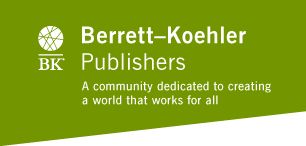• Shows how all types of differences, beyond those usually considered in diversity books, can accelerate the innovation needed to gain competitive advantage
• Defines five distinctive qualities leaders need to make differences a catalyst for success
• Lays out an easy-to-follow six-stage process for generating new levels of creativity, problem solving, leadership, and performance
• 2010 Axiom Business Book Award Winner in HR & Employee Training
Putting our differences to work means creating an environment where people, naturally unique and different—diverse by nature and experience—can work more effectively in ways that drive new levels of creativity, innovation, problem solving, leadership, and performance in the marketplaces, workplaces, and communities of the world. Debbe Kennedy shows how to make all the dimensions of difference—such as thinking styles, perspectives, experiences, work habits, and management styles, as well as more traditional diversity considerations like gender, race, ethnicity, physical abilities, sexual orientation, and age—tremendous sources of strength.
Kennedy draws on the latest research and a wealth of real-world examples to offer compelling evidence showing exactly how putting our differences to work accelerates innovation and contribution. She identifies five distinctive qualities of leadership that leaders must add to their portfolio of skills to make differences an engine of success. And she provides a detailed six-stage process for making the most of differences in the workforce, combining first-person best-practice stories and strategic with tactical ideas to help you put each step into action. Kennedy has written both a personal and a practical guide that changes the prevailing rules of how to think, behave, and operate as a leader, connecting four diverse elements of business and society that have traditionally been siloed: innovation, leadership, diversity, and inclusion. She and futurist Joel Barker also look at how new discoveries, including Web 2.0 technologies, can draw us closer together in previously unimagined ways.
 0 items in cart
0 items in cart









